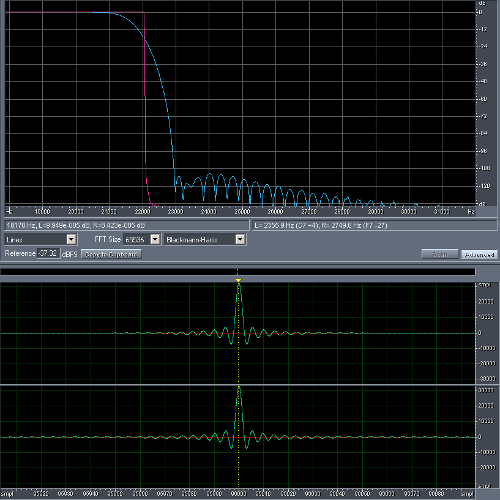Quote:
The fact that everyone picked a different ranking for the samples shows that they are audibly identical. If you really think you were able to detect something, take the next step and fly blind. But it seems that you really don't want the real answer.
Sorry - I DO want the right answer. Xnor provided it and although I do not agree with such manipulations that can never occur in real life or any known unmanipulated recording process, I aceept it as possible means of proving that response above 20 kHz does not matter. I just do not find it necesarry to n-times listen to b, which did not sound OK to me on first and any subsequent listens - and always will, as long as you use equipment with enough high frequency extension.
A friend who sells audio also listened to these samples and also chose the same ranking of a>c>b - with the same reservations regarding c as myself.
Most demoing of equipment is done today with CD, less with SACD and for obvious reasons even less with analog - so he has that "CD in ears" for sure as well. The fact that I object to b so much is simple - it just does not sound right. As it is a fake 96/24 with real recording above 21 kHz removed and replaced with white noise and A was apearently made from B by simply making 44,1/16 CD out of it, makes A more or less the same as if it was made from real 96/24 or C, as for CD anything above 21 k or so gets filtered, no matter if original recording or artificially added white noise. A did sound
correct and normal to me, B - NEVER. The fact that I object b so much must be somehow connected with "hearing/sensing/whatever" that artificially added noise above 21 k or so - and I repeat, I can not possibly hear pure 21 kHz sine tone.
All three samples sounded decidedly PCM. Linn Records had for this Xmas for each day one free download - ranging in resolution from 44,1kHz/24 bit all the way up to 192/24 for some more serious stuff. It is only 192/24 that does approach real thing - for the "lighter"music genres, only one jazz piece received 192/24, most pop/rock/indie stuff not exceeding 48 k/24 - Linn did not offer higher resolution for these genres for a reason. All recordings, no matter the resolution, were of at least demo quality. And I will purchase the whole albums of those recordings that are available as SACDs, that is in other words DSD at 2.8 MHz - which was most probably original master format, although I suspect that real master was even better DSD at 5.6 MHz due to the awesome sound quality. Wish Linn offered DSD downloads besides present PCM downloads of various resolution/price as well.
I did listen to some more "CD sound" on vinyl today : http://www.discogs.com/Joe-Williams-Every-Night-Recorded-Live-On-Vine-St/release/3561459
because I do prefer good music performed really well as in this live ( regrettably digital ) recording over some less inspired performance(s) on direct to disc pure analog recordings - adding further to "CD in my ear". My only regret is that very seldom do superb musicianship and recording coincide on the same "whatever" you can buy and listen to at home. Perhaps the most succesful to date is http://www.discogs.com/Harry-Belafonte-Belafonte-At-Carnegie-Hall-The-Complete-Concert/release/1177631 - if you can not hear clear difference between the original LP issue (or many re-releases ) and CD, be it regular or ((gold) limited ) edition(s), then you are in the wrong hobby or profession. Here the first hit I got for "Harry Belafonte Live at Carnegie Hall SACD" search: http://www.thefreelibrary.com/The+Living+Stereo+SACDs+Revisited+and+the+Belafonte-Carnegie+Shootout.-a0131903296 Please note that the SACD mentioned was mastered from CD version/master - NOT directly from analog, which should have resulted in much better sonics. No idea if SACD mastered directly from analog master is available by now - will stick to the original analog LP anyway.
But, be it as it may with SQ - enjoy the recording for the music, as it probably still is the best captured live concert in history. I hope you will not disagree with this last statement too.
This is the last post of mine regarding abc test for which I thank the author again.







